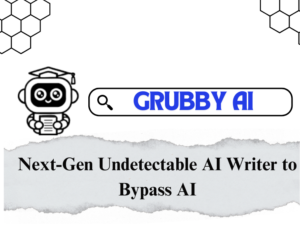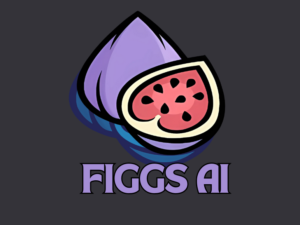In today’s fast-paced digital world, businesses need smarter solutions to engage with customers and automate routine tasks. AI-powered chatbots are one of the best tools for this purpose. You might think building one requires extensive coding knowledge, but with new AI tools, such as Building AI-Powered Chatbots Without Programming.
In this blog, we’ll walk you through the process of Building AI-powered chatbots Without Programming and Chat Bot Training skills. We’ll also highlight some of the best tools you can use and share additional resources to make your journey easier.
 Building a chatbot without programming allows non-technical users—like small business owners, marketers, and educators—to benefit from AI without needing expensive development teams.
Here are some reasons why no-code chatbot platforms are ideal:
Building a chatbot without programming allows non-technical users—like small business owners, marketers, and educators—to benefit from AI without needing expensive development teams.
Here are some reasons why no-code chatbot platforms are ideal:
What is an AI-Powered Chatbot?
An AI-powered chatbot is a virtual assistant that uses artificial intelligence to understand and respond to user queries in real time. Unlike traditional chatbots, which rely on predefined scripts, AI chatbots learn from conversations and can handle more complex requests. These bots can answer customer queries, provide recommendations, schedule appointments, and even process transactions—all while saving businesses time and resources.Why Should You Build a Chatbot Without Coding?
 Building a chatbot without programming allows non-technical users—like small business owners, marketers, and educators—to benefit from AI without needing expensive development teams.
Here are some reasons why no-code chatbot platforms are ideal:
Building a chatbot without programming allows non-technical users—like small business owners, marketers, and educators—to benefit from AI without needing expensive development teams.
Here are some reasons why no-code chatbot platforms are ideal:
- User-Friendly: Most platforms offer drag-and-drop interfaces that are easy to understand.
- Cost-Effective: You don’t need to hire developers, making it a budget-friendly option.
- Faster Deployment: You can build and launch a chatbot in a matter of hours, rather than weeks.
- Scalability: You can easily update or expand your chatbot without major technical changes.
Step-by-Step Guide: How to Build an AI Chatbot Without Coding
1. Choose the Right AI Chatbot Platform
There are several no-code platforms designed specifically for Building AI-Powered Chatbots Without Programming. Here are a few popular ones:- Tars – Perfect for lead generation and customer support. (External Link: Tars Chatbot)
- Landbot – Focuses on building conversational experiences for websites and apps. (External Link: Landbot)
- ManyChat – Best for integrating with Facebook Messenger, WhatsApp, and Instagram.
- Dialogflow – Google’s AI chatbot platform for more advanced functionalities but still manageable for beginners.
2. Identify Your Chatbot’s Purpose
Before diving into the creation process, think about what you want your chatbot to do. Define its role clearly:- Customer Support Bot: Answer common questions like business hours, refund policies, or product details.
- Sales Bot: Help customers find products or services based on their preferences.
- Appointment Scheduling Bot: Manage bookings for salons, clinics, or service providers.
- FAQ Bot: Provide users with instant answers to frequently asked questions.
3. Design Conversational Flows
The next step is to create the conversational flows for your chatbot. This means designing the different paths a conversation can take based on user input. For instance, if someone asks, “Do you offer free shipping?” the bot should respond with the appropriate answer or guide the user to more information. To make this easy, most no-code platforms offer drag-and-drop interfaces where you can visually design these interactions. Here’s a basic framework for designing your chatbot’s conversation:- Greeting Message: A friendly introduction like “Hi! How can I help you today?”
- Options: Provide clickable buttons or suggest questions to guide the user (e.g., “Track Order,” “Ask a Question,” or “Talk to Support”).
- User Input: Allow users to type in their queries for more personalized responses.
- Response: Provide clear and concise answers to user questions. Use AI tools like Natural Language Processing (NLP) to understand variations in user input.
4. Train Your Chatbot with AI
The AI part of a chatbot is what makes it smart. It can understand and learn from user inputs to improve its responses over time. Most no-code platforms allow you to integrate pre-trained AI models which already understand natural language. For example, platforms like Dialogflow and Tars offer pre-configured AI that helps your bot understand phrases like “What are your store hours?” or “Can I get a discount?” You can also manually train your bot by adding FAQs and potential variations of each question. The more examples you provide, the better your chatbot will become at understanding user intent.5. Test Your Chatbot
Before launching, it’s essential to test your chatbot. Use it as a customer would and check for any possible issues:- Does it understand different types of questions?
- Is the response time quick enough?
- Are there any conversation paths that lead to dead ends?
6. Integrate Your Chatbot with Communication Channels
Once you’re happy with your chatbot, it’s time to connect it to your communication channels. Most platforms offer integration with popular channels like:- Websites: Embed the chatbot directly on your website for instant customer support.
- Facebook Messenger: Easily connect with users on social media.
- WhatsApp/Instagram: Many platforms support direct messaging apps to engage customers on these channels.
7. Monitor and Improve Your Chatbot
Even after your chatbot is live, your work isn’t finished! You should regularly monitor its performance and collect feedback from users. Most chatbot platforms provide analytics dashboards that allow you to track:- Number of Conversations
- Success Rate (how often the bot provides the correct answer)
- Customer Satisfaction based on ratings or feedback
Top No-Code AI Chatbot Tools to Explore
Here are some popular no-code chatbot builders that allow you to create an AI chatbot without coding:- Tars – Known for easy lead generation.
- Landbot – Great for building interactive bots for web and mobile.
- ManyChat – Ideal for social media integration.
- Dialogflow by Google – Advanced features but still easy for beginners.
Video Tutorial: How to Build a No-Code Chatbot
For those who prefer a visual guide, check out this step-by-step YouTube tutorial on creating a chatbot without coding:Frequently Asked Questions
1. Can I build a chatbot without any programming experience?
Yes! Many no-code platforms provide drag-and-drop interfaces that make chatbot creation simple, even for beginners with no coding knowledge.2. How long does it take to create a chatbot?
It depends on the complexity of the chatbot. You can build simple bots in a few hours. More advanced chatbots may take a day or two to fine-tune.3. Are there free platforms to create a chatbot?
Yes, many platforms offer free versions with basic features. Some, like Tars and Landbot, provide free trials or limited usage plans that allow you to create and test your bot.Conclusion: Start Building Your AI-Powered Chatbot Today!
Building AI-Powered Chatbots Without Programming is not only possible but also incredibly easy with the right tools. Whether you’re a business owner, marketer, or educator, chatbots can automate your tasks, enhance customer engagement, and save you time. By following the steps above, you’ll be able to create a chatbot that’s ready to launch in no time. Don’t wait—start experimenting with no-code chatbot builders today, and watch how AI transforms your business! For more AI insights and tools, visit AI Upsurge and explore our other resources on artificial intelligence and automation.
Most Visited Blogs
- How AI is Revolutionizing Digital Marketing 2024
- King AI Image Generator
- Advantages of Artificial Intelligence Images
- Why is Controlling the Output of Generative AI Systems Important
- How Has Generative AI Affected Security
- DID AI the #1 choice for AI-Generated
- Advantages and Disadvantages of Supervised Learning
- Google Cloud Supported Languages
- Innovative Project Ideas For Students
I’m a passionate AI enthusiast and the founder of AI UPSURGE. With a deep interest in the latest developments in artificial intelligence, I’m dedicated to making AI accessible and understandable for everyone. Through insightful articles, practical guides, and aims to empower readers to harness the power of AI in their daily lives and professional endeavors. When not writing or exploring the latest AI trends.







